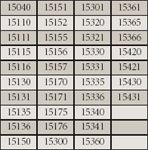- Case-Based Roundtable
- General Dermatology
- Eczema
- Chronic Hand Eczema
- Alopecia
- Aesthetics
- Vitiligo
- COVID-19
- Actinic Keratosis
- Precision Medicine and Biologics
- Rare Disease
- Wound Care
- Rosacea
- Psoriasis
- Psoriatic Arthritis
- Atopic Dermatitis
- Melasma
- NP and PA
- Skin Cancer
- Hidradenitis Suppurativa
- Drug Watch
- Pigmentary Disorders
- Acne
- Pediatric Dermatology
- Practice Management
- Prurigo Nodularis
- Buy-and-Bill
Article
Skin replacement and surgery; skin substitutes
One of the biggest changes in the 2006 CPT book involves the grafting section of the Integumentary System. There were many deletions, a host of new codes and a significant number of amendments to the rules and guidelines that govern these complex surgical procedures.

Additions, revisions, deletions


Here are the codes that had changes in their descriptions. The language that was deleted is marked with a strikethrough, and new text appears underlined.

15100: Split-thickness autograft graft, trunk, arms, legs; first 100 sq. cm or less, or 1 percent of body areas of infants and children (except 15050)
15120: Split-thickness autograft graft, face, scalp, eyelids, mouth, neck, ears, orbits, genitalia, hands, feet, and/or multiple digits; first 100 sq. cm or less, or 1 percent of body areas of infants and children (except 15050).
15400: Application of Xenograft, skin (dermal, for temporary wound closure; trunk, arms, legs; first 100 sq cm or less, or 1 percent of body area of infants and children.
15401: Each additional 100 sq cm, or each additional 1 percent of body area of infants and children, or part thereof (List separately in addition to code for primary procedure).
16020: Dressings and/or debridement of partial-thickness burns, initial or subsequent, without anesthesia, office or hospital, small (less than 5 percent total body surface area).
16025: without anesthesia, medium (e.g., whole face or whole extremity, or 5 percent to 10 percent total body surface area).
16030: without anesthesia, large (e.g., more than one extremity, or greater than 10 percent total body surface area).
The rules





